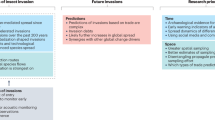Abstract
ALL those who have travelled about the world in recent years must have noticed the insects which fly to ships at anchor, attracted by the bright electric lights. Some years ago I secured a most interesting series (including a new species of moth) off the coasts of Chile and Peru, and in many other places have made collections where I could not go ashore. The most remarkable occasion of this sort was perhaps at Diamond Harbour, on the Hooghly River, near Calcutta, in December 1927. Going up, we waited some time, and again going down (on the way to Rangoon). The latter delay was caused by a railway accident in France, which prevented the through mails from arriving in time, so we had to wait until they were brought out in a tender some time in the night. Thus the deplorable accident brought good fortune to an entomologist travelling in India—a curious example of the interdependence of things. Diamond Harbour is not really a harbour, but merely a station on the river where ships anchor to await favourable conditions, with the shore distant perhaps half a mile.
This is a preview of subscription content, access via your institution
Access options
Subscribe to this journal
Receive 51 print issues and online access
$199.00 per year
only $3.90 per issue
Buy this article
- Purchase on SpringerLink
- Instant access to full article PDF
Prices may be subject to local taxes which are calculated during checkout
Similar content being viewed by others
Author information
Authors and Affiliations
Rights and permissions
About this article
Cite this article
COCKERELL, T. Insects Flying to Ships. Nature 123, 528 (1929). https://doi.org/10.1038/123528a0
Issue date:
DOI: https://doi.org/10.1038/123528a0



